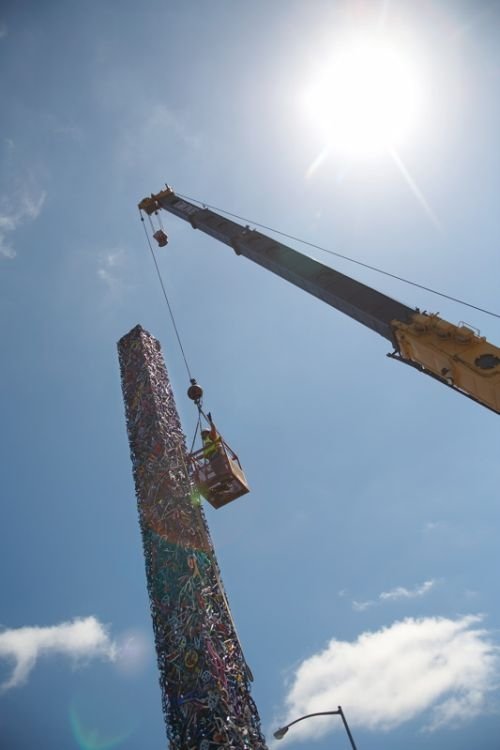|
|
Bicycle Obelisk By Mark Grieve And Ilana Spector
|
In Constantinople, the Eastern Emperor Theodosius shipped an obelisk in AD 390 and had it set up in his hippodrome, where it has weathered Crusaders and Seljuks and stands in the Hippodrome square in modern Istanbul. This one stood 95 feet tall, weighing 380 tons. Its lower half reputedly also once stood in Istanbul but is now lost. The Istanbul obelisk is 65 feet tall.
Rome is the obelisk capital of the world. The most prominent is the 25.5 m/83.6 ft high 331 ton obelisk at Saint Peter's Square in Rome. The obelisk had stood since AD 37 on its site on the wall of the Circus of Nero, flanking St Peter's Basilica:
"The elder Pliny in his Natural History refers to the obelisk's transportation from Egypt to Rome by order of the Emperor Gaius (Caligula) as an outstanding event. The barge that carried it had a huge mast of fir wood which four men's arms could not encircle. One hundred and twenty bushels of lentils were needed for ballast. Having fulfilled its purpose, the gigantic vessel was no longer wanted. Therefore, filled with stones and cement, it was sunk to form the foundations of the foremost quay of the new harbour at Ostia."
Re-erecting the obelisk had daunted even Michelangelo, but Sixtus V was determined to erect it in front of St Peter's, of which the nave was yet to be built. He had a full-sized wooden mock-up erected within months of his election. Domenico Fontana, the assistant of Giacomo Della Porta in the Basilica's construction, presented the Pope with a little model crane of wood and a heavy little obelisk of lead, which Sixtus himself was able to raise by turning a little winch with his finger. Fontana was given the project.
|
|









